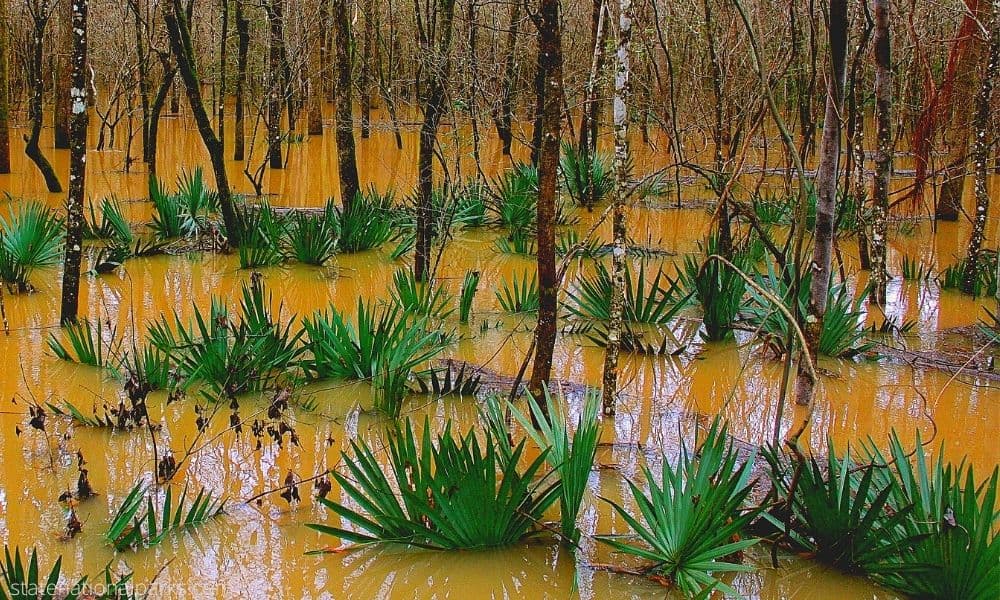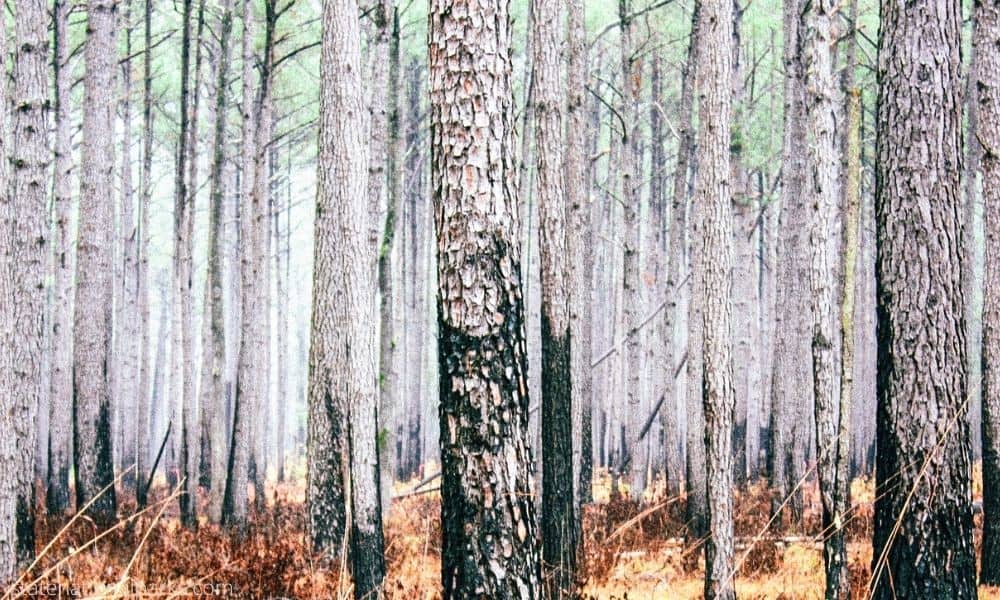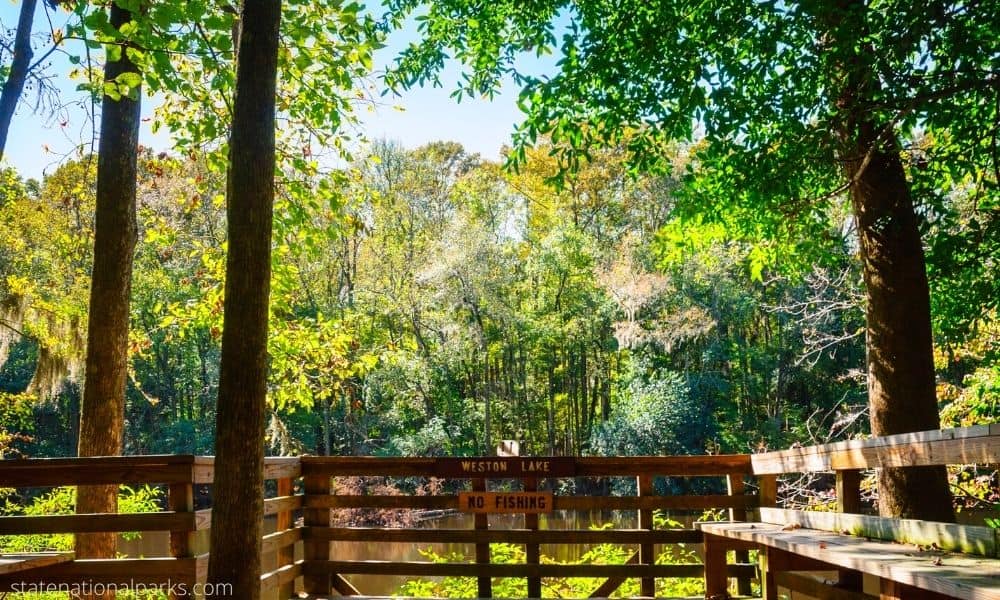 Congaree National Park lies in eastern North Carolina, south of Charlotte. It is North Carolina’s first recognized state park. The park covers an area of more than 26,000 acres of beautiful wooded forests, hillsides and wetlands.
Congaree National Park lies in eastern North Carolina, south of Charlotte. It is North Carolina’s first recognized state park. The park covers an area of more than 26,000 acres of beautiful wooded forests, hillsides and wetlands.
A visit to Congaree will give you a feel for the old-growth forests of this region. It is also an excellent site for hiking and wildlife watching. The park conserves the largest tract of Appalachian hardwood timber in the United States, with some of its old growth forests still in place.
The scenery of Congaree is picturesque, as are most of North America’s large wooded forests. It has a mixture of brown, black and blue hues, with some silver coloring. The park was originally named after the First Congaree Indian chief, who had built a camp there and named it in honor. The famous Thomas Edison visited the park on his visit to the United States and did a lot of work on his new electric railway. Other notable visitors to the park include luminaries such as Alton Brown, Roy Rogers, Walt Disney, conservationist Crystal Griffith and even the late William Safronick.
The Columbia River flows through the park, which is part of the greater Richmond area. Virginia and North Carolina are both within a day’s drive. Visitors can take a short cruise on the Ride Outeaview Railroad or take a train into the mountains for some scenic mountain scenery. There are many places to stay, eat and explore.
A Columbia cabin rental provides shelter from the sun, from the rain and from the freezing temperatures. Some of the most popular locations to stay in Columbia are the historic Cherry Grove Village, the historic Blackjack Mountain Cabin and the historic Lewis and Clark Cabin. Each has its own charm and is the perfect place to spend the night. There are many activities that families of all ages can enjoy, making it a great family vacation or a great way to spend a weekend.
If you have never been to the area, you should really give it a try. You may be pleasantly surprised. The climate is wonderful. The scenery is spectacular. And it does not cost much to get in touch with the past.
Visiting the historical sites can be done in two ways. The first is hiking along the trail system, which gives amazing views of the Gorge and Brandywine Creek. The other option is taking a train ride down to the Catskills. This provides a beautiful view of the Appalachian Mountains as well as the beautiful hamlets of Blenheim, Woodstock, Killington and Peekskill.
No matter what route you choose, you will have a lot to keep track of. You will need to take pictures of every beautiful site you see. It is important to make sure that your camera and accessories are in order before you leave on your vacation. Taking a planned vacation can save you money and provide you with a memorable experience.
Congaree National Park is located in central South Carolina, and its weather is influenced by its location in the southeastern United States. Here is an overview of the weather patterns in Congaree National Park:
Summer: Summers in Congaree National Park are hot and humid, with temperatures typically ranging from the mid-80s to mid-90s Fahrenheit (29-35 degrees Celsius). The humidity can make the temperature feel even hotter. Thunderstorms are common in the afternoons and evenings, and they can be severe.
Fall: Fall in Congaree National Park is mild and pleasant, with cooler temperatures and lower humidity than the summer months. Temperatures typically range from the mid-50s to mid-70s Fahrenheit (12-24 degrees Celsius). Fall foliage is also a popular attraction in the park, with trees turning a variety of colors in late October and early November.
Winter: Winters in Congaree National Park are cool and wet, with temperatures ranging from the mid-30s to mid-50s Fahrenheit (2-12 degrees Celsius). Rainfall is common, and occasional snow and ice storms can occur.
Spring: Spring in Congaree National Park is mild and wet, with temperatures ranging from the mid-50s to mid-70s Fahrenheit (12-24 degrees Celsius). Rainfall is common, and thunderstorms can occur in the afternoons and evenings.
It’s important to note that weather conditions in Congaree National Park can be unpredictable, and visitors should come prepared for a range of weather conditions. Summer visitors should be aware of the risk of thunderstorms and should take precautions against lightning strikes. Winter visitors should be prepared for rain and occasional ice storms. Spring and fall visitors should come prepared for rain and variable temperatures. It’s also a good idea to check weather forecasts before visiting the park and to be aware of any weather-related closures or restrictions.
Related posts:
Congaree National Park is a beautiful and unique natural reserve in the heart of South Carolina. It boasts over 26,000 acres of old-growth bottomland hardwood forest and is home to a diverse array of wildlife, including otters, deer, bobcat...
Congaree National Park is a unique and beautiful park located in South Carolina, in the southeastern region of the United States. The park covers over 26,000 acres and is home to some of the largest remaining old-growth bottomland hardwood forest...